
Layout, design and features …
Quickly get to the right feature …
AMD Ryzen 9 7950X heatspreader
AMD AM5 LGA Socket
AMD Zen 4 Architecture
AMD DDR5 Rate
AMD EXPO Profile
PCI Express 5.0
AMD Ryzen 9 7950X overclocking
AMD Precision Boost Overdrive
AMD Performance Presets
AMD SAM
AMD Chipset Driver
Heatspreader …
The solid, nickel-plated copper lid, which is soldered to the silicon DIEs, stands out when viewed from above. Its shape is very jagged and it is not sealed all around the PCB. The relatively high weight comes from the thick heatspreader, as AMD wanted to maintain compatibility with AM4 coolers despite the lower AM5 socket. Thus, users can usually continue to use their coolers from the previous AM4 socket without any problems.
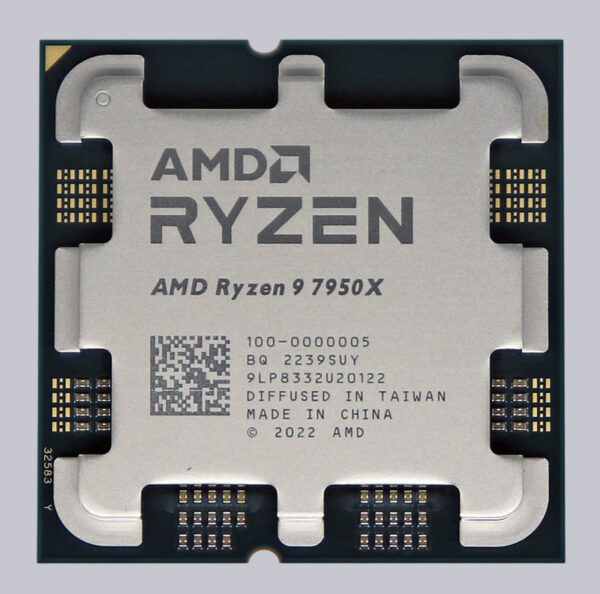
AMD AM5 LGA Socket …
There are now no pins on the bottom due to the new LGA1718 AM5 socket (see AMD AM5 PGA to LGA socket change discussion. Instead, there are now 1718 flat contact points. Bent pins on the CPU are now a thing of the past.
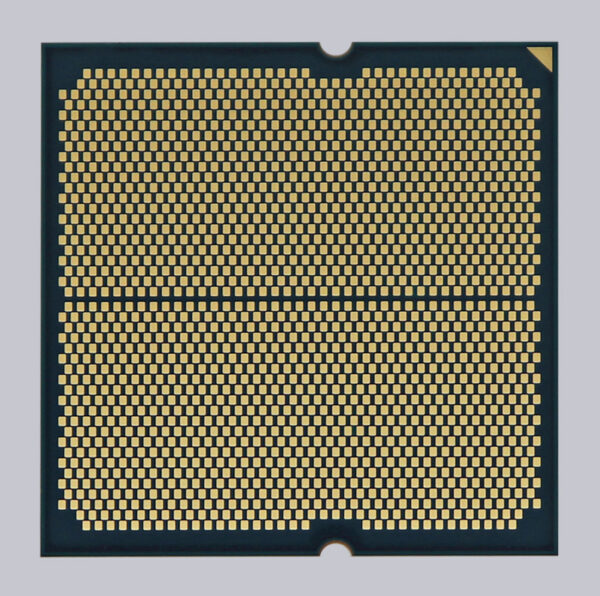
However, the contact springs in the socket can easily bend and should be handled with care (see LGA CPU Installation Guide for AMD and Intel CPUs.
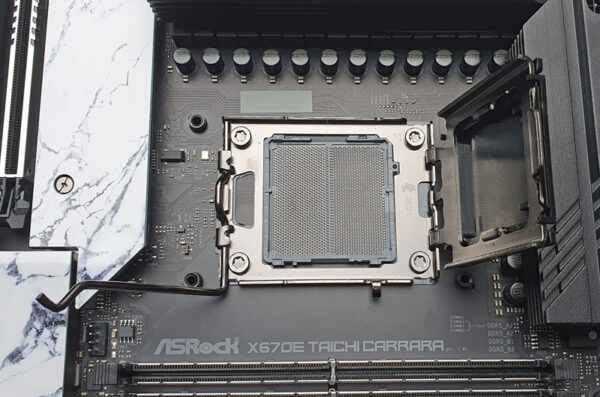
Zen 4 Architecture …
Although a new socket has arrived with Ryzen 7000, the Zen 4 architecture is only a moderate further development of the previous Zen 3 processing units. With Zen 4, the new processors get a small IPC (instructions per clock) uplift and achieve about 10-15% higher clock rates than their predecessors. In addition, energy efficiency has been improved thanks to new manufacturing methods. The processing units are now manufactured in TSMC’s 5nm FinFet technology, instead of 7n in the predecessor Zen 3. The I/O DIE, which also houses the RDNA 2 graphics unit, has been changed from 12nm to 6nm.
DDR5 performance …
All Ryzen 7000 processors have received a new 2-channel DDR5 memory controller that can run up to four memory modules. Officially, this is specified up to 5200 MHz. In reality, however, RAM modules with 6000MHz and more can be operated. Here you can see an AM5 motherboard with four DDR5 RAM slots, 2 of which are equipped with Crucial DDR5-4800 modules.
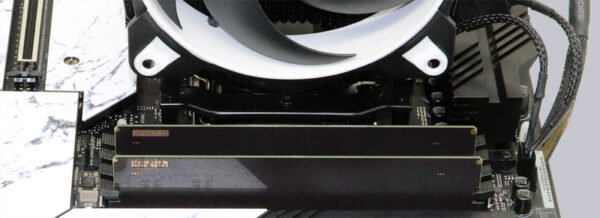
DDR5 AMD EXPO Profile …
For an improved RAM compatibility with AMD processors, the so-called EXPO profile was developed especially for AMD processors. Memory manufacturers can store such an EXPO profile in the RAM module, which is then read by the mainboard and sets the RAM timings accordingly. This should enable users to put fast memory into operation as easily as possible. Similar things are also known from Intel with the already longer established XMP profile, which many AMD motherboards can also read and process. Thus, no special EXPO RAM is required for AMD Ryzen 7000 processors. The Crucial RAM we used in the test does not contain an EXPO profile and was recognized and set by the motherboard without any problems.
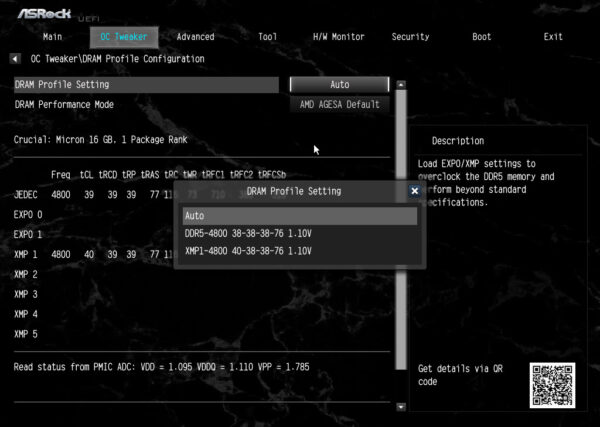
PCIe 5.0 …
Ryzen 7000 processors support the new PCIe Gen 5 standard, which enables twice the bandwidth of PCIe Gen 4 for data transfer. The first PCIe Gen5 SSDs were even presented at CES 2023, which is now already available in stores like this Gigabyte Aorus Gen5 10000. Since PCIe Gen 5 is backwards compatible, previous devices can still be used and upgraded later. Thus, with Ryzen 7000, one is already well prepared for future hardware. Whether and how many PCIe Gen 5 interfaces can be used depends on the motherboard’s configuration. This has to be considered when buying, because not every AM5 motherboard really offers PCIe Gen 5 interfaces. In our tests, we used a 1 TB Crucial P5 Plus PCIe Gen 4 SSD in a PCIe Gen 5 slot.
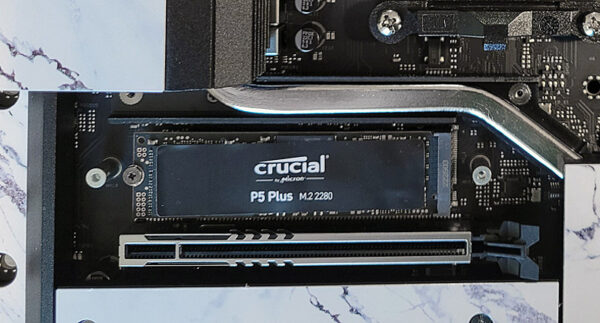
AMD Ryzen 7000 overclocking …
AMD has unlocked the multiplier in all Ryzen 7000 processors released so far, which gives the user a free choice of clock frequency if desired. However, you should keep in mind that the manufacturer does not offer a warranty if the processor is damaged or data is lost.
On a ASRock X670E Taichi Carrara motherboard, the AMD Ryzen 9 7950X CPU could be overclocked to 5500 MHz with all cores using ASRock’s Blazing OC Tuner tool!
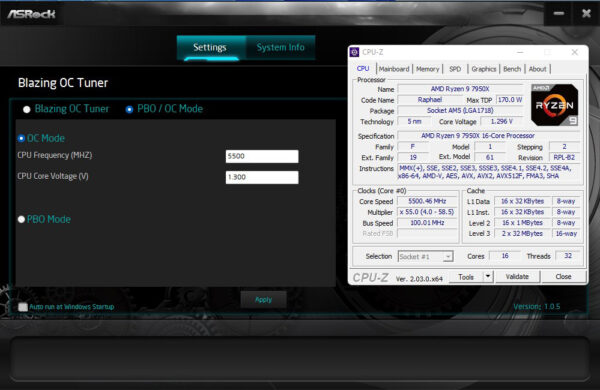
Two cores could even be overclocked up to 5800 MHz, although the CPU voltage had to be increased to 1.36 volts for this.
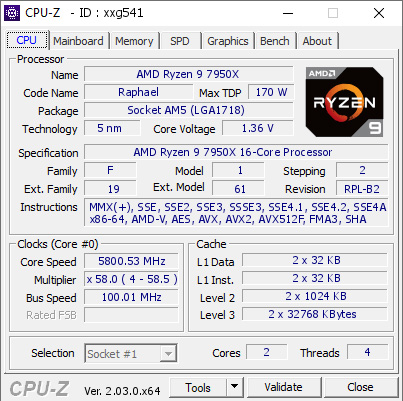
Precision Boost Overdrive …
The tuning algorithm Precision Boost Overdrive (PBO) for semi-automatic overclocking of the processor, already known since Zen 2, is also available again in Zen 4 and even activated in the BIOS by default. It can be used to increase the maximum clock frequency by up to 200MHz and reduce the power consumption. The BIOS PBO menu includes controls for power consumption, maximum temperature, power consumption and voltage offset.
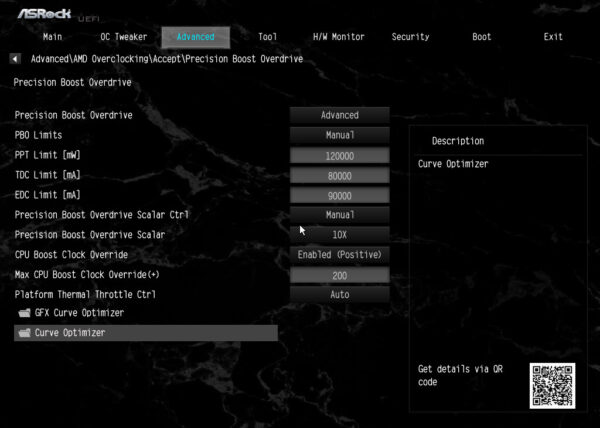
1-Click Overclocking with Performance Presets …
Since the latest firmware update AGESA ComboAM5 1.0.0.4, which AMD provides to motherboard manufacturers, the overclocking and optimization of the Ryzen 7000 processors has been simplified significantly. Preset PBO configurations can now be activated with a single click in the BIOS. Thus, overclocking or energy saving becomes child’s play. In addition, the already known Curve Optimizer is available for manual fine-tuning in the BIOS, with which you can manually set a voltage offset either for all computing cores or even for individual cores. With a bit of skill and time, you can reduce the processor’s energy consumption to the extreme.
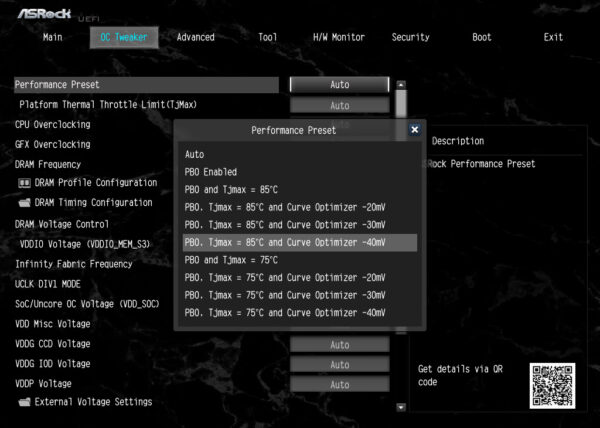
If you prefer to overclock your CPU in Windows, you can use AMD’s Ryzen Master program, which also offers many settings for optimizing the processor. However, the graphical interface of Ryzen Master is a bit cluttered and the options are somewhat limited compared to BIOS overclocking. ASRock, for example, offers a much tidier tool with the previously mentioned Blazing OC Tuner, where you can switch between Blazing OC Tuner and PBO OC.
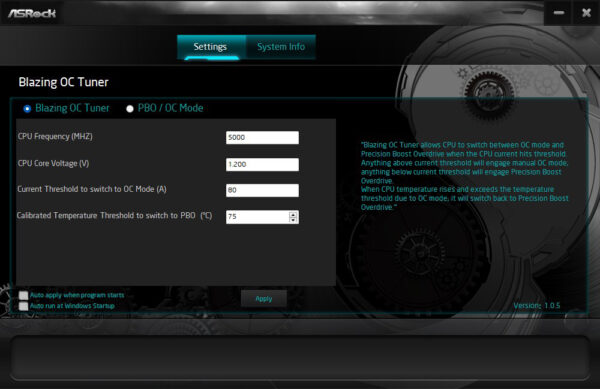
AMD SAM …
SAM is also an old acquaintance. Smart Access Memory has enabled direct memory access of the CPU to the fast graphics card memory since Zen 3 in combination with a B550 or X570 chipset, provided you own an AMD graphics card from the RX6000 series or newer. SAM partly increases the achievable frame rates by a few percent in gaming. To activate SAM, “Above 4G Decoding” and “Resize-Bar Support” have to be enabled in the BIOS.
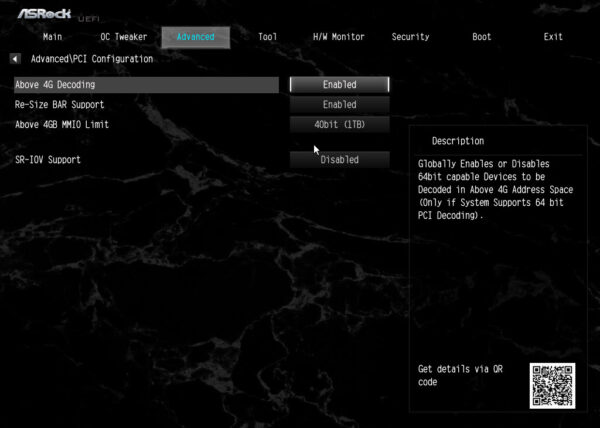
AMD Chipset Driver …
AMD again offers the chipset drivers as a driver package. At the time of testing, the AMD Ryzen chipset driver version 4.11.15.342 was available as a download for Microsoft Windows 10 and Windows 11.
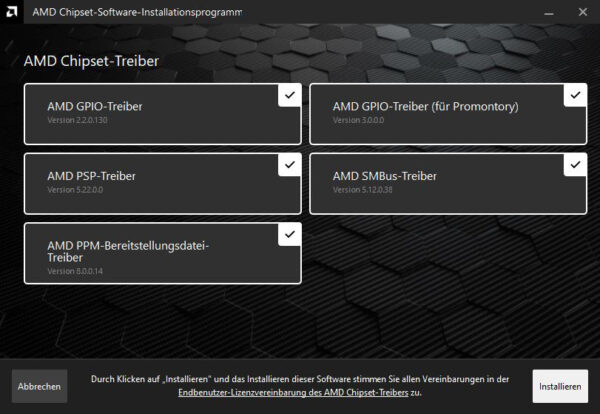
AMD Ryzen 9 7950X Installation and test setup …

